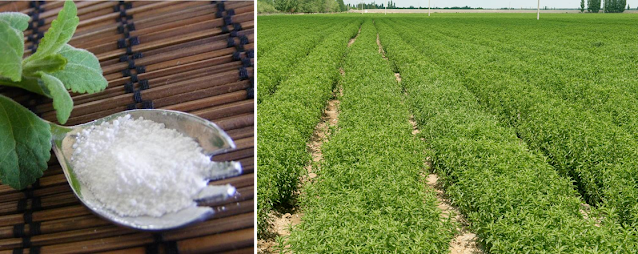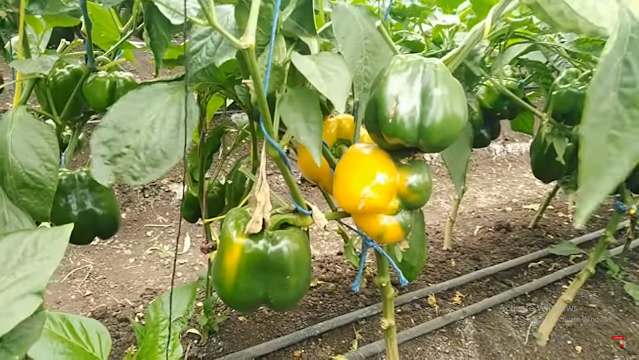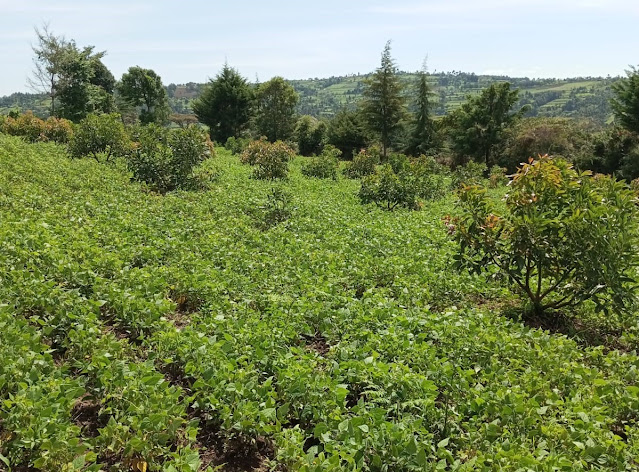Several fruit seedlings can mature in less than one year, allowing you to enjoy a relatively quick harvest. Despite the short maturity period, the plants can give you fruits from one year up to ten years from the first harvest. In this article, we will tell you about 6 crops you can invest in and enjoy quick returns on your investment.
1. Strawberry
Strawberries are very popular, known for their sweet and juicy taste and, of course, the unique strawberry flavour.
 |
| Strawberry farming in Kenya: Harvesting starts just 3 months after transplanting |
Strawberry farming is relatively easy, especially if you are keen to provide balance soil nutrients. The process begins with preparing the soil, which should be well-drained and rich in organic matter.
Strawberry plants are then planted in rows 40 cm apart and 30 cm from plant to plant. This spacing is to allow for proper growth and airflow. Regular watering is essential to hydrate plants, especially during dry periods. Adequate sunlight is also crucial for the plants to thrive. You should also be keen to check the soil nutrients regularly and apply fertilizer to replenish any nutrients that might have been used up.
Harvesting starts in just 3 months, and you should be careful to
pick the berries only when they become fully ripe; this is indicated by their
vibrant red colour. Careful handling is essential to avoid bruising the
delicate fruits. Strawberry farming will be profitable for you, especially when
you manage the production factors well and adhere to best practices.
- Cost per seedling Ksh. 60
- Seedlings per acre -24,000
- Spacing - 30cm by 40cm
- Fruit price- Ksh 150 per kg (farmgate)
- Yield- 200kgs per week
- Common pests- red spider mites
- Diseases- blight, fusarium wilt, bacterial wilt
- Lifespan 2-3 years
Lear more about commercial strawberry farming
from this article: Why Just A Few Farmers Are Swimming In The Berry Millions
2. Tree Tomato
 The
tree tomato, also known as tamarillo, is a small to medium-sized tree that can
reach heights of up to 5 meters. It has large, heart-shaped leaves that give
your farm a beautiful dark green canopy. The fruit is oval-shaped and varies in
color, ranging from yellow to orange, but you will enjoy the red variety the
most; it has excellent taste, and 97% of the fruit is edible. The fruit's flesh
is juicy and tangy, slightly sweet. Tree tomato is also rich in vitamins A and
C, antioxidants, and dietary fiber.
The
tree tomato, also known as tamarillo, is a small to medium-sized tree that can
reach heights of up to 5 meters. It has large, heart-shaped leaves that give
your farm a beautiful dark green canopy. The fruit is oval-shaped and varies in
color, ranging from yellow to orange, but you will enjoy the red variety the
most; it has excellent taste, and 97% of the fruit is edible. The fruit's flesh
is juicy and tangy, slightly sweet. Tree tomato is also rich in vitamins A and
C, antioxidants, and dietary fiber.
Tree
tomato plants are relatively easy to grow; you are good to go if you have a
farm with well-drained soil and a cold to warm climate.
Tree tomato seedlings can be propagated from seeds or cuttings. However, it is better to use ready-to-plant seedlings that are certified and disease-free. You can prepare to plant seedlings from Richfarm Kenya nurseries in Embu or Naivasha. Call or Whatsapp them on 0724698357/ 0723213602 to place your order.
The
trees typically start producing fruits in the 9th month. Tree tomato farming
can be done on a small scale or as a commercial operation, with the fruits
being sold fresh or processed into jams, juices, and sauces. With proper care
and support from our agronomists, tree tomato farming will give you a steady
flow of income.
- Cost per
seedling Ksh. 60
- Seedlings per
acre -1,100
- Spacing - 2m by
2m
- Fruit price- Ksh
80-100 per kg
- Yield- 20-30 kgs
per tree per year harvested every week
- Common pests-
white flies and aphids
- Lifespan 10yrs
Here is a story that gives you an overview of
the tree tomato market state in Kenya: Tree Tomato Farmers in Kenya Rewarded With Good Prices Due to A Biting Shortage
3. Passion fruit
 You can profit from
passion fruit farming whether in a cool highland or a hot lowland. This is
because there are varieties suited for different climatic conditions. What you
should check the most is the state of your soil. Passion fruits require
well-drained soil with a pH level between 6.0 and 7.0. The plants thrive in
warm climates with temperatures between 20°C and 30°C.
You can profit from
passion fruit farming whether in a cool highland or a hot lowland. This is
because there are varieties suited for different climatic conditions. What you
should check the most is the state of your soil. Passion fruits require
well-drained soil with a pH level between 6.0 and 7.0. The plants thrive in
warm climates with temperatures between 20°C and 30°C.
You will also need
support structures such as trellises or fences for your passion fruit vines to
climb on. As with other fast-maturing crops, regular watering is essential.
Keep the soil consistently moist but not waterlogged. Also, remember to keep
checking and adding soil nutrients and organic matter.
Harvesting usually begins
6 to 9 months after transplanting healthy seedlings. The grafted purple variety
matures faster than the sweet yellow variety, which is generally not
grafted.
You will make money with
passion fruit farming even while doing it in a small space in your backyard
because the market is so readily available. However, if you want to make a
kill, target the export market: this market prefers high-quality purple passion
fruits but pays very well.
- Cost per seedling Ksh. 100
- Seedlings per acre - 650
- Spacing - 2m by 3m
- Fruit price- Ksh 60-90 per kg
(farmgate)
- Yield- 1 kg per plant per week
- Lifespan 3 years
Here’s a more detailed article on commercial passion
fruit farming: Passion Fruit Farming in Kenya: The Costs and Expected Returns
4. Pawpaw
Pawpaws, also known as papayas, are among the fruits that always have a short supply in the market. People love them, especially for babies, since they are rich in vitamins A and C and other essential nutrients. The first step in pawpaw farming is selecting a suitable location with well-drained soil and access to sunlight. Luckily, pawpaws are not heavy feeders, so you won't be required to pump in a lot of fertilizers. However, ensure that you apply at least 1 bucket of farmyard or animal manure per tree during planting: avoid using chicken manure.
Pawpaw trees are adapted
to dry conditions and can survive the harshest droughts. However, to get a
consistent production of sweet fruits, you should consider irrigating them
during the dry seasons. Also, remember to prune off all the old leaves to help
improve air circulation and promote healthy fruit development.
Harvesting of pawpaws
typically begins between the 6th and the 9th month after transplanting. The
fruits can be harvested before they ripen, provided they are mature enough. You
will tell a mature pawpaw fruit by observing a red or yellow-orange stripe in
the fruit.
Pawpaw farming is a
lucrative business for people in hot and dry areas. You can also profitably
cultivate pawpaws in warm midlands such as the coffee zones of central Kenya.
The demand for fresh pawpaws continues to increase in local and international
markets. Therefore, pawpaw farming allows you to create a steady and guaranteed
income.
- Cost per seedling Ksh. 100
- Seedlings per acre -1,100
- Spacing - 2m by 2m
- Fruit price- Ksh. 40-60 per kg
- Yield- 30-40 tons per year
harvested weekly
- Common pests- mites
- Lifespan 2-5 yrs depending on
variety
Here is a step-by-step guide on pawpaw
farming: Pawpaw farming in Kenya: A Guide From Planting To Selling
5. Grapes
Grapes farming is a fascinating and rewarding endeavour. Not
only do grapes make for a delicious snack, but they also have a variety of
uses, from making wine to producing grape juice and even raisins. Whether
you're a seasoned farmer or just starting out, there are a few key things to
keep in mind when it comes to growing grapes.
 |
| Grapes farming in Kenya, Embu County. |
First and foremost, grapes do not tolerate water logging in the
soils hence you must ensure that your have loam or sandy loam soils. For sweet
and deep coloured grapes, plant them in a field with plenty of sunlight.
Choosing the right variety of grapes for your specific climate
and growing conditions is also essential. You can get information about this on
our article: You Too Can Grow Grapes In Kenya and Make a Good Profit.
Also ensure that you learn how to prune your vines correctly and
in good time. Talk to our agronomists if you haven’t learned this yet. This will
help you induce fruiting and bring the vines to maximum fruit production.
Finally, give your vines the best protection against pests and diseases
and this is another area you might need help from our agronomists. While grape
farming can sometimes be challenging, the rewards are well worth the effort.
There's nothing quite like the taste of a freshly picked grape. But sweeter are
the bank figures you start seeing in your account if you do this commercially. So,
if you're up for a fun and rewarding farming adventure, try grapes farming. You
won't be disappointed, my friend.
- Cost per seedling Ksh. 300
- Seedlings per acre -650
- Spacing - 2m by 3m
- Fruit price- Ksh. 400-500 per kg
- Yield- 3-5 tons per acre
- Common pests- mites
- Lifespan - 20 yrs plus
If you would like to learn how to make money
from grapes farming, please read this: Grapes Farming: How to Make Money With Grapes Farming in 2023
Dragon fruit farming is a fascinating venture that combines both beauty
and profitability. With its vibrant pink or yellow skin and unique, succulent
flesh speckled with tiny black seeds, dragon fruit is a true showstopper. Not
only does it make for an eye-catching addition to any fruit basket, but it also
boasts a plethora of health benefits. Packed with antioxidants, vitamin C, and
fiber, dragon fruit is a nutritional powerhouse that can boost your immune
system and aid digestion.
When farming dragon fruit, there are a few key factors to consider. While dragon fruit thrives in tropical and subtropical regions, it can also be grown in greenhouses or containers in cooler climates. Additionally, adequate support for the climbing vines is essential to ensure healthy growth and maximum fruit production. A post should support two seedlings and up to 5 vines per seedling.
One of the great things about dragon fruit farming is its
versatility. Whether you're a small-scale farmer looking to diversify your
crops or a passionate gardener with limited space, dragon fruit can be grown in
various settings. From backyard gardens to large-scale plantations, there's a
place for dragon fruit in every farming endeavor.
With its unique appeal and potential for profitability, dragon fruit farming is a venture that is definitely worth considering.
- Cost per seedling Ksh. 500
- Seedlings per acre -2,000
- Spacing - 2m by 1m
- Fruit price- Ksh 700-1000 Per Kg
- Yield- 20-30 fruits per vine, a plant should have at least 5 vines
- Common pests- the plant is generally disease and pest resistant.
- Lifespan - 40 yrs plus
And do you know why you should invest in
dragon fruit farming right away? Read this to learn just 3 Reasons You Should Invest In Dragon Fruit Farming In Kenya
While we have done our best to give you as much information as we could about these investments, we acknowledge that we might have left some details out. But we are always glad to help you even further. You can always reach us on Whatsapp or call on +254724698357 / +254723213602.
This website is also packed with a lot more information: surf through it to benefit more. Do not forget to visit our Farmers Resources Page to get full, PDF guides on various crop farming.
Also be on the lookout for more articles and bits of info on our social media pages: Facebook Richfarmkenya and Twitter (X) RichfarmK






















